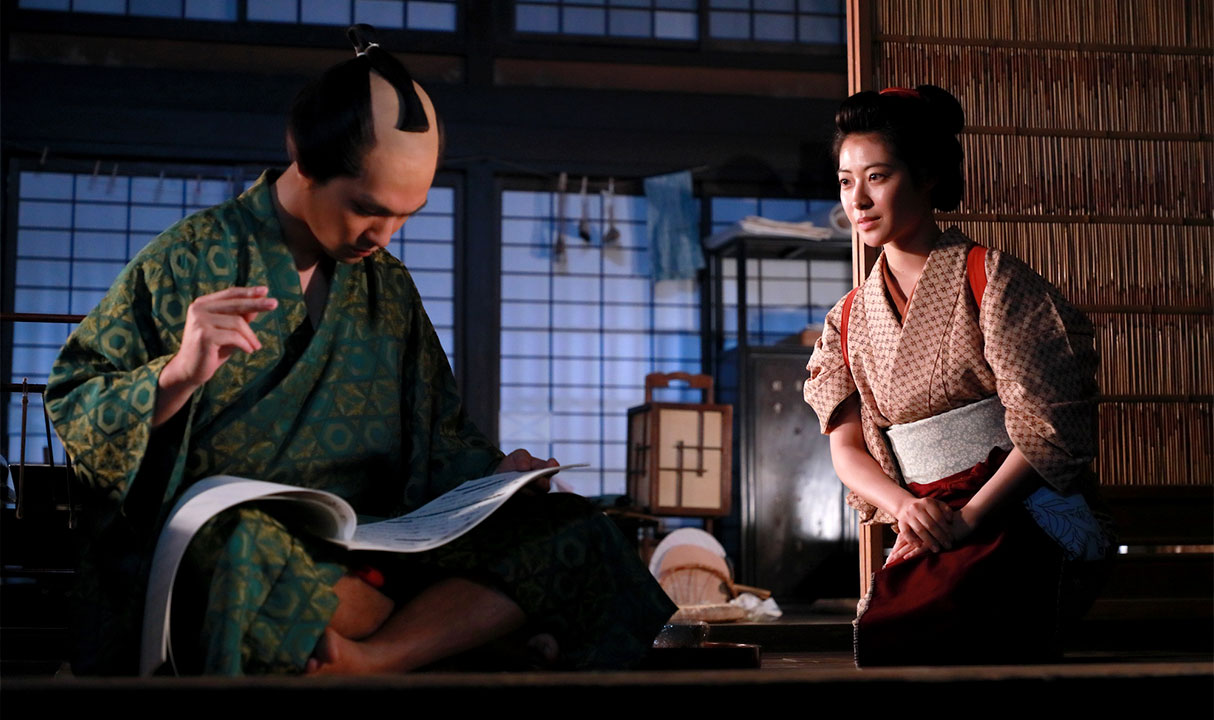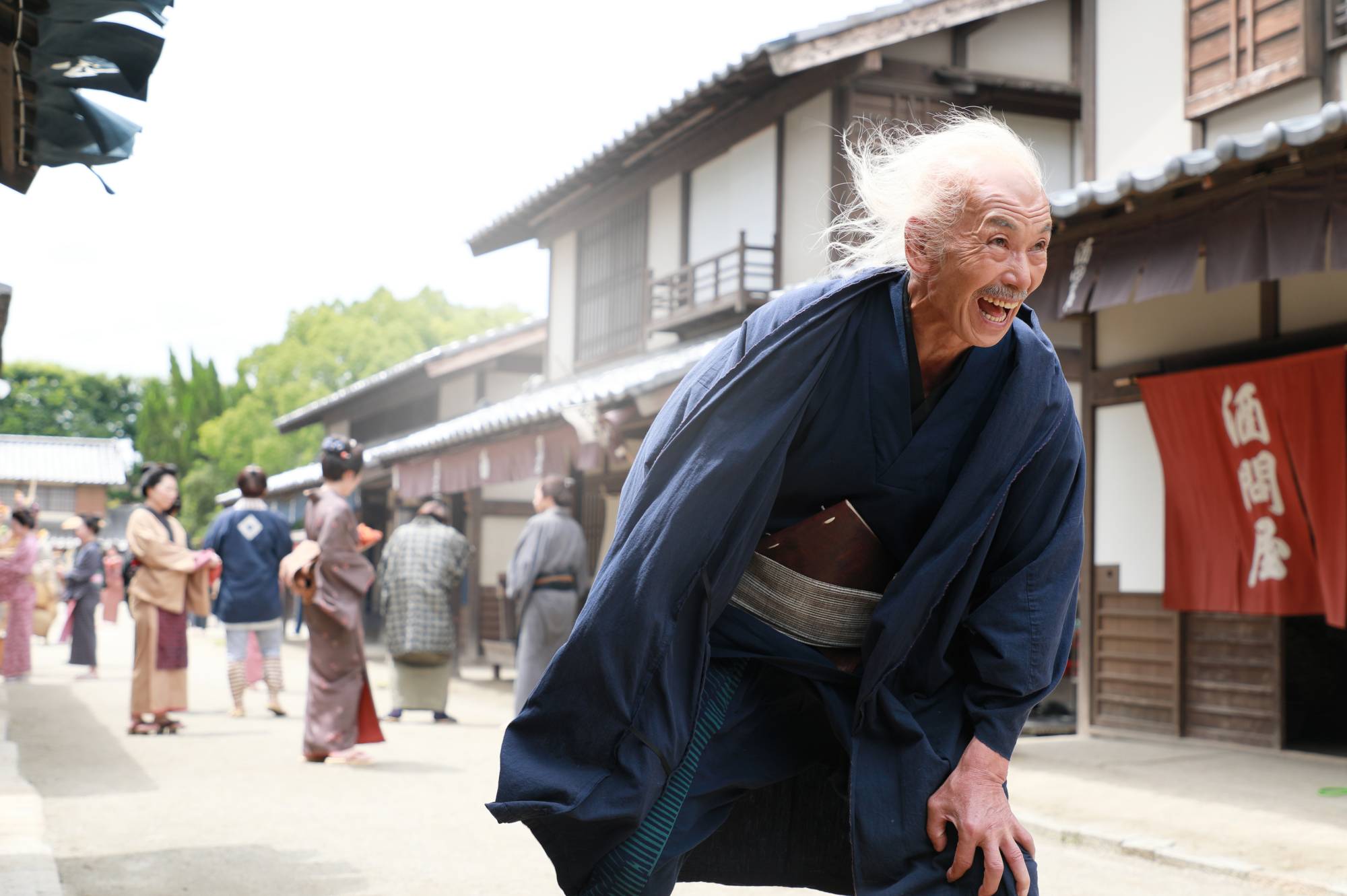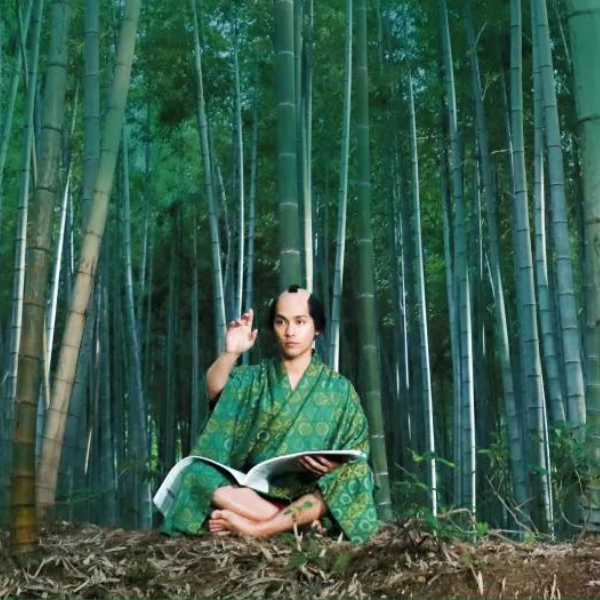Hokusai - le film
HOKUSAI - THE FILM
Walk through the waves of Houkusai’s Japan
He who, with “The Great Wave off Kanagawa”, entered the Pantheon of universal and absolute images of art - alongside “The Starry Night” by Van Gogh, “The Mona Lisa” by Leonardo da Vinci, “The Kiss ” by Klimt or “The Birth of Venus” by Botticelli— has long been perceived as a mediocre painter by his peers. Hajime Hashimoto's "Hokusai" covers the life of the man who would become the world’s print icon.


Katsushika Hokusai — played by Yûya Yagira, revealed by Kore-eda in 2004 in "Nobody Knows" — was born into a humble family around the year 1760, in Edo, the former name of Tokyo. He joined a school of ukiyo-e painters at a very young age. From this artistic movement, inseparable from the advent of a merchant bourgeoisie in the cities, we discover painting but also a profusion of prints — facilitating marketing through reproduction. Artists borrowed their subjects from worldly pastimes; courtesans, erotic scenes, kabuki theater... It was in these workshops and with publishers that Hokusai honed his skills, but he was ostracized because of his impetuous character and unconventional style. After a period of great poverty, he found his style through an animist representation of nature. The artist with dozens of pseudonyms finally chose Hokusai — in homage to a Buddhist deity he admired.
Rather than a continuous narration, the film is a series of frames, like a window into different periods of Hokusai's life. Due to the absence of biographical details, the director draws inspiration from the abundance of paintings, prints and drawings left behind by Hokusai — sometimes going as far as reinterpreting works such as "Red Fuji" or "Sudden Wind" for the film. The director plays with the aesthetics of the print; a polished composition, impeccable colorimetry, exaggerated slow motion or colorful and expressive characters such as kabuki actors.

The sets and costumes propel us directly into the world of prints — from blueish landscapes to courtesans of the red light district of Edo. The feature film is also a fresco of Japan at the time — still isolated from the outside world. At the beginning of the 19th century, the country went through a period of crisis, with rampant famine and peasant revolts. In response, the Tokugawa shoguns held the country with an iron fist, with bloody repression and censorship going as far as the arrest or execution of artists. It is in this narrow world that Hokusai and his peers evolve. The Dutch being the only foreigners authorized to reside in Japan — Japanese artists know little about Western art. In a beautiful scene from the film, Juzaburo Tsutaya — Hokusai's friend and publisher of ukiyo-e prints — shows a serigraph of a world map, like a treasure, to Hokusai. In the twilight of his life, the art collector entrusts him with his fantasies of travel and discovery of exotic artists.
Hokusai died in 1949, at almost 90 years old — four years before the opening of Japan to the world, forced by the United States naval officer Matthew Perry who landed in Edo Bay with warships — without knowing that his works would go on to inspire Claude Monet, Paul Gauguin or Alfred Sisley.
A passionate and obsessive painter, writer, illustrator of manga heralding books — in the film, Hokusai is also a loving and taciturn husband and father. Although she is also a major figure in ukiyo-e art, his daughter Katsushika Ōi is kept in the shadow of art history by her father... She was nevertheless entitled to a biopic before him with the award-winning animated film “Miss Hokusai” (2015).

Les décors et les costumes nous propulsent directement dans l’univers des estampes - des paysages bleutés aux courtisanes du quartier rouge d’Edo. Le long-métrage est également une fresque du Japon de l’époque - encore fermé au monde extérieur. Au début du XIXe siècle, le pays traverse une période de crise, avec une famine et des révoltes paysannes. En réponse, les shoguns Tokugawa tiennent le pays d’une main de fer, à coup de répression sanglante et de censure allant jusqu’à l’arrestation ou l’exécution d’artistes. C’est dans ce monde étroit qu’évoluent Hokusai et ses pairs. Les hollandais étant les seuls étrangers autorisés à résider au Japon - les artistes japonais ne connaissent que peu l’art occidental. Dans une scène magnifique du film, Juzaburo Tsutaya -ami d’Hokusai et éditeur d’estampes ukiyo-e- montre une sérigraphie d’un mappemonde, tel un trésor, à Hokusai. Au crépuscule de sa vie, le collectionneur d’art lui confie ses fantasmes de voyage et de découverte d’artistes exotiques.
Hokusai meurt en 1949, à presque 90 ans - quatre ans avant l’ouverture au monde du Japon, contraint par l’officier de marine états-unien Matthew Perry qui débarque dans la baie d’Edo avec des navires de guerre - sans savoir que ses oeuvrent allaient voyager et inspirer Claude Monet, Paul Gauguin ou Alfred Sisley.
Peintre passionné et obsessif, écrivain, illustrateur de livres annonciateurs des mangas - dans le film, Hokusai est aussi un époux et un père aimant et taciturne. Bien qu’elle aussi figure majeure de l’art ukiyo-e, sa fille Katsushika Ōi, est maintenue dans l’ombre de l’Histoire de l’art par son père… Elle a néanmoins eu droit à un biopic avant lui avec le film d’animation primé “Miss Hokusai” (2015).






